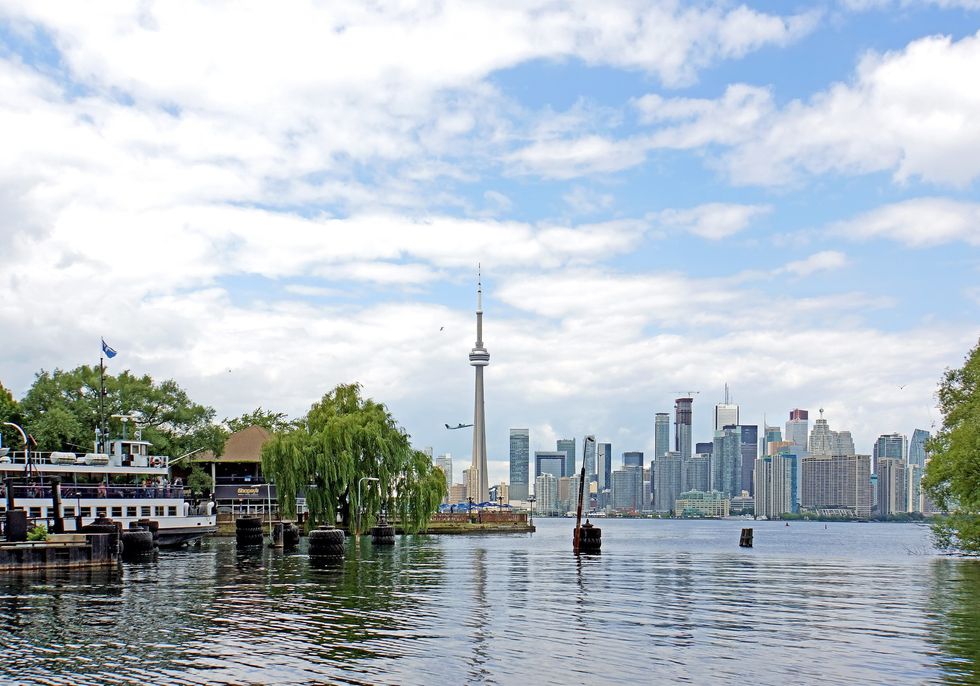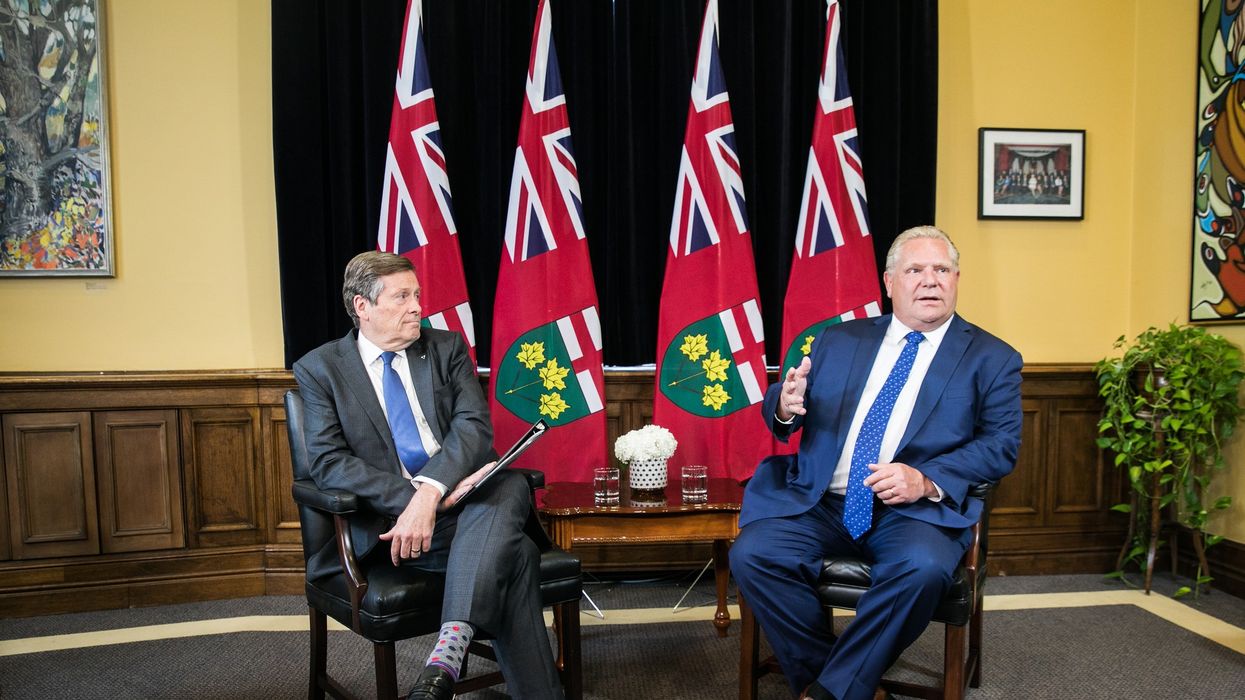
When Toronto Mayor John Tory visited the site of a collapsed bridge in the east end last weekend, it was hard not to feel sorry for the poor man. Less than a month after the most convincing victory of his political career, he has been rendered all but irrelevant. His Worship looked like the kindly school caretaker on hand to see for himself what has become of the place he loves.
Despite having received an impressive 479,659 votes in the municipal election in October, Tory is no longer in control. The power behind the mayoral throne, is, of course, Ontario Premier Doug Ford. And as DoFo has made painfully clear, he's ready, willing and able to intervene into the affairs of the city whenever he feels the urge. If cutting council in half wasn't enough, he has also announced he will "upload" the subway to the province and dismissed the board and management of Ontario Place so he can oversee its transition into a "world-class centre." Many believe this could well mean a waterfront casino like the one the city turned down in 2013.
READ: Toronto Needs A Better Subway System, Not Nicer Stations
The question now is how long will it be before Ford moves a little farther east along the waterfront to the site he has lusted after since 2011—the Port Lands. Who could forget the bold and imaginative plans Ford, then a lowly Toronto city councillor, dreamed up for the massive 800-acre property? Even now it sends shivers down one's spine to think of what might have been—the Ferris wheel, the monorail, the mall!
And how did an ungrateful city respond? With contempt, derision and ridicule. Citizens and activists banded together to fight Doug Ford and his scheme. They called it a banal and inappropriate fate for an area on track to be remade over the next 30 years as a fully mixed-use neighbourhood where up to 10,000 people would live, work and play. They preferred a vision of the Port Lands that saw it as the place where Toronto would meet the future, one as large as downtown.
READ: On Premier Doug Ford And Why Toronto’s Municipal Election Is Important For All Canadians
By the time the proposal was killed, Ford was a bit of a local laughing stock. And let's be honest, the details of his plan were a bit hazy. He didn't seem to understand that the Port Lands is largely landfill. It's a mucky and soupy landscape devoid of infrastructure, a long way and billions of dollars from being ready for redevelopment. Then there was the small matter of timing; even a city like Toronto with its red-hot property market needs years, even decades, to absorb so much growth.
As Ontarians now know, Ford is not a man to take such treatment lightly. Indeed, he has made it clear since being elected premier in July that he holds a grudge like a dog with a bone. His desire for vengeance runs deep. Many interpret his brutish decision to cut 25 councillors as a settling of scores. His argument that the move would save the city $25 million over four years was patently ridiculous. Indeed, doubling the workload of the remaining councillors will easily cost more than it saves.
READ: Ontario Government Announces New Builds Are Exempt From Rent Control
For Ford to get his way on the Port Land would mean the Conservatives would have to take on Waterfront Toronto (WT), the tripartite agency created in 2001 by the federal, provincial and municipal governments. It is responsible for developing a vast swath of land on the Toronto waterfront between Etobicoke on the west to Scarborough in the east. There's generally agreement the corporation has done excellent work; just look at the West Don Lands, the East Bayfront and the Central Waterfront, meticulously planned precincts where long-neglected industrial lands are being transformed into some of the most desirable real estate in Toronto.
Ironically, of the three governments involved in WT, the province has played the most proactive role in the organization's fortunes, mostly by pressuring various public agencies to step out of their silos and get on board. And let's not forget the significant contribution made by the late Jim Flaherty, the closet progressive who as finance minister in Stephen Harper's Conservative government rarely missed a WT press conference.
READ: The Big Threat To Toronto And John Tory Now Comes From The Province And Doug Ford
But the Ford Tories are a different breed of conservative. They see themselves as avenging angels. Their self-appointed mission is more getting even than getting it right. Because WT reports to three levels of government, which all contribute money to the agency, there are limits to what the province can do unilaterally. Still, Ford's regime has shown its willingness to break with behavioural norms in the manner of Donald Trump in the U.S.
Waterfront Toronto is worth saving for several reasons; most importantly, it has done a better job controlling and guiding growth than have either the city or province. More to the point, it simply doesn't make sense to dismantle the agency or its agenda before it has been completed. But Torontonians will have to remain vigilant; they proved they can stop Doug Ford once, they may have to do it again.





















